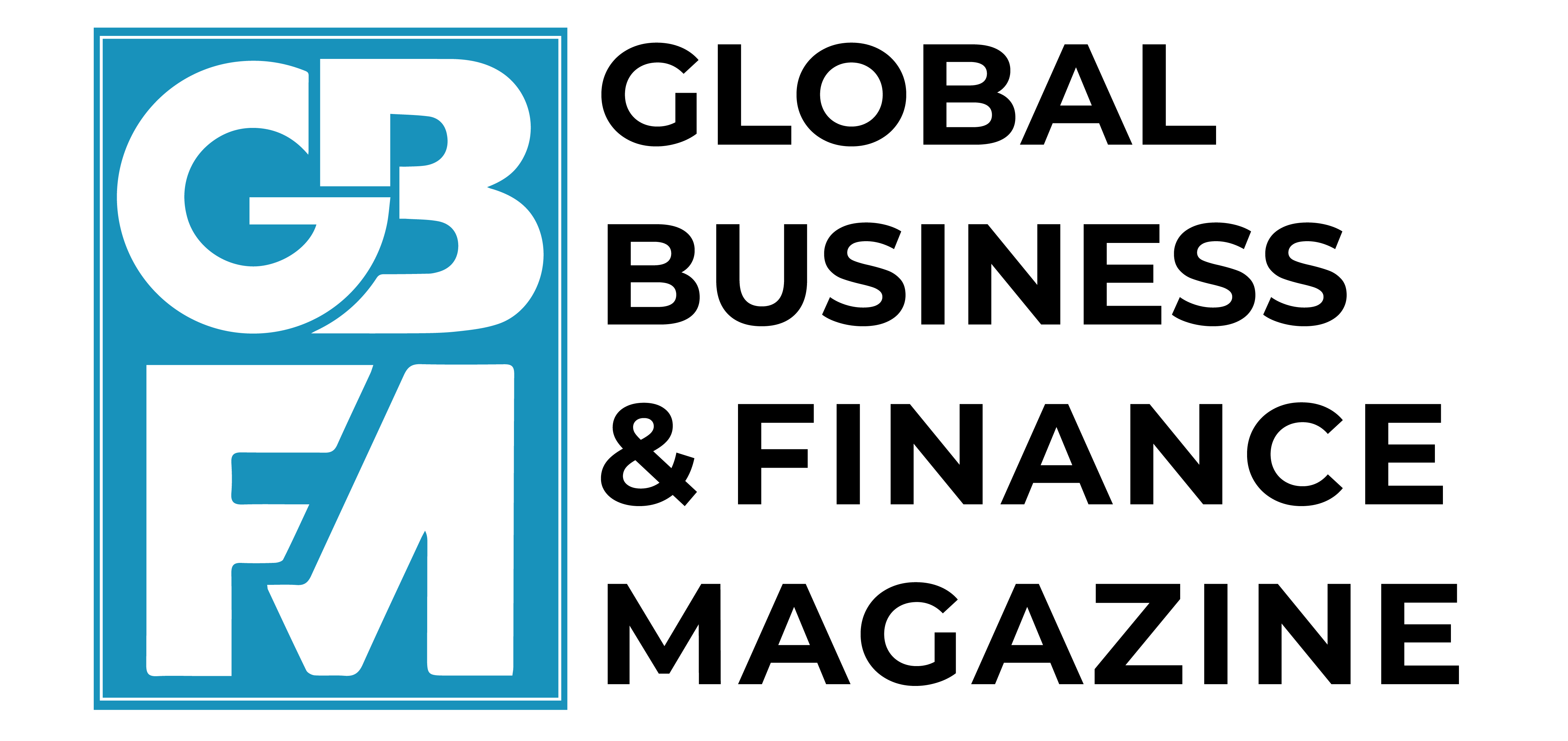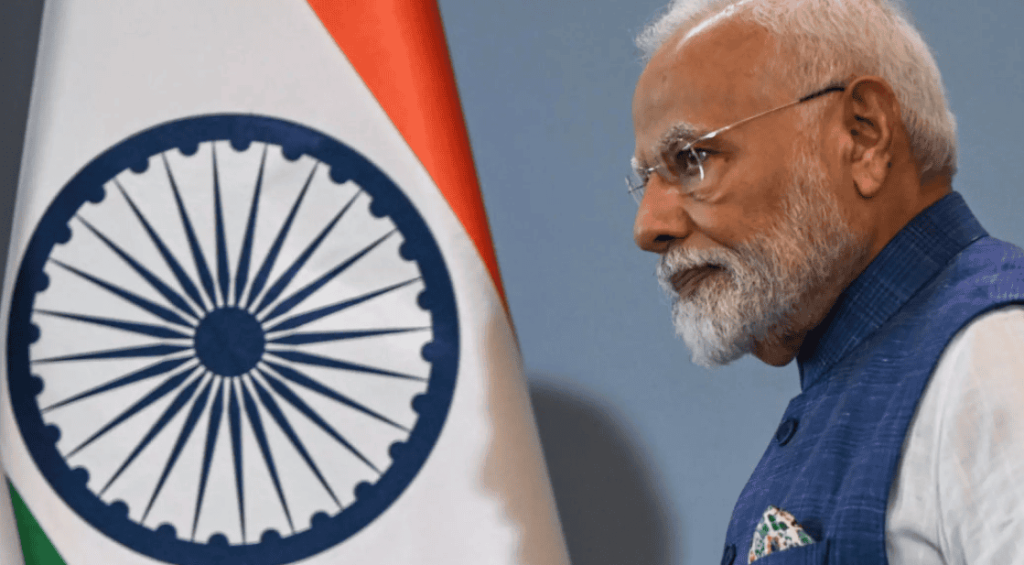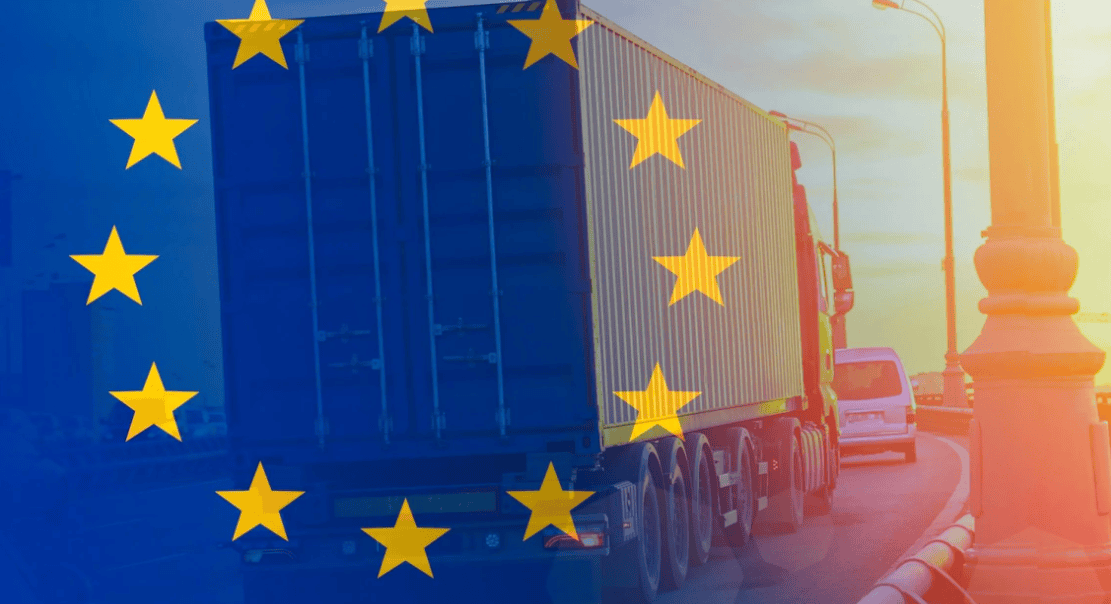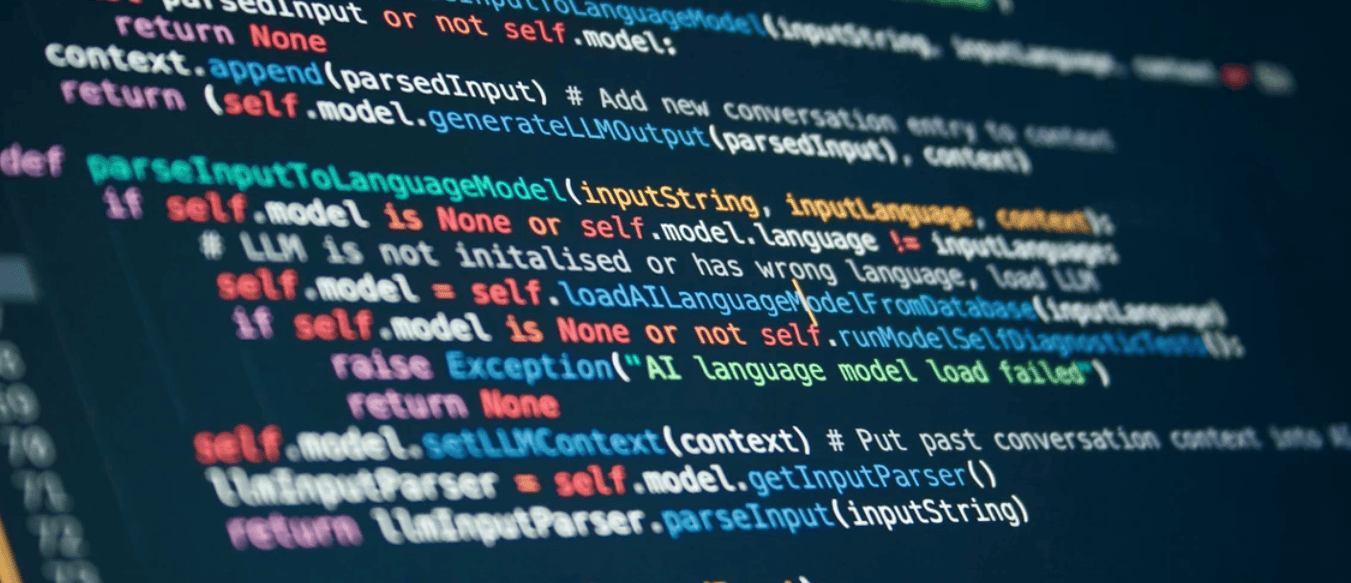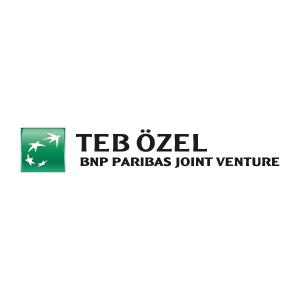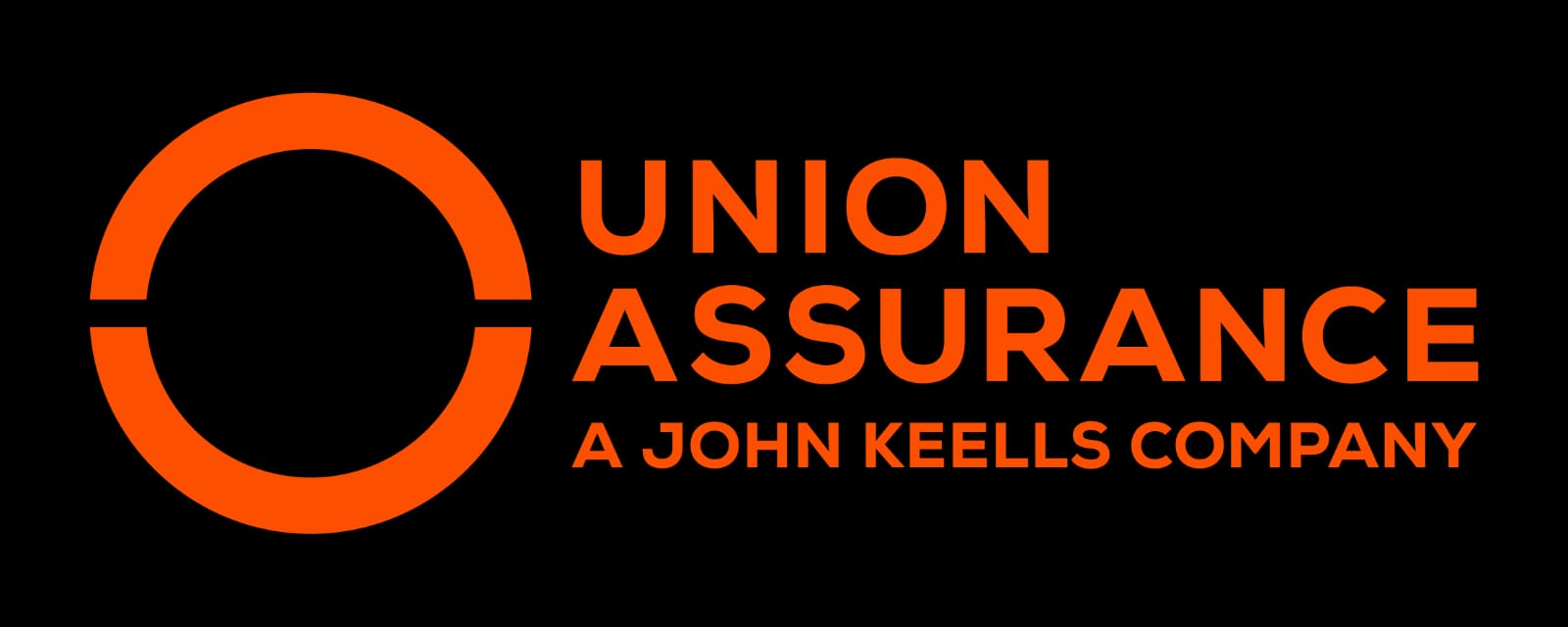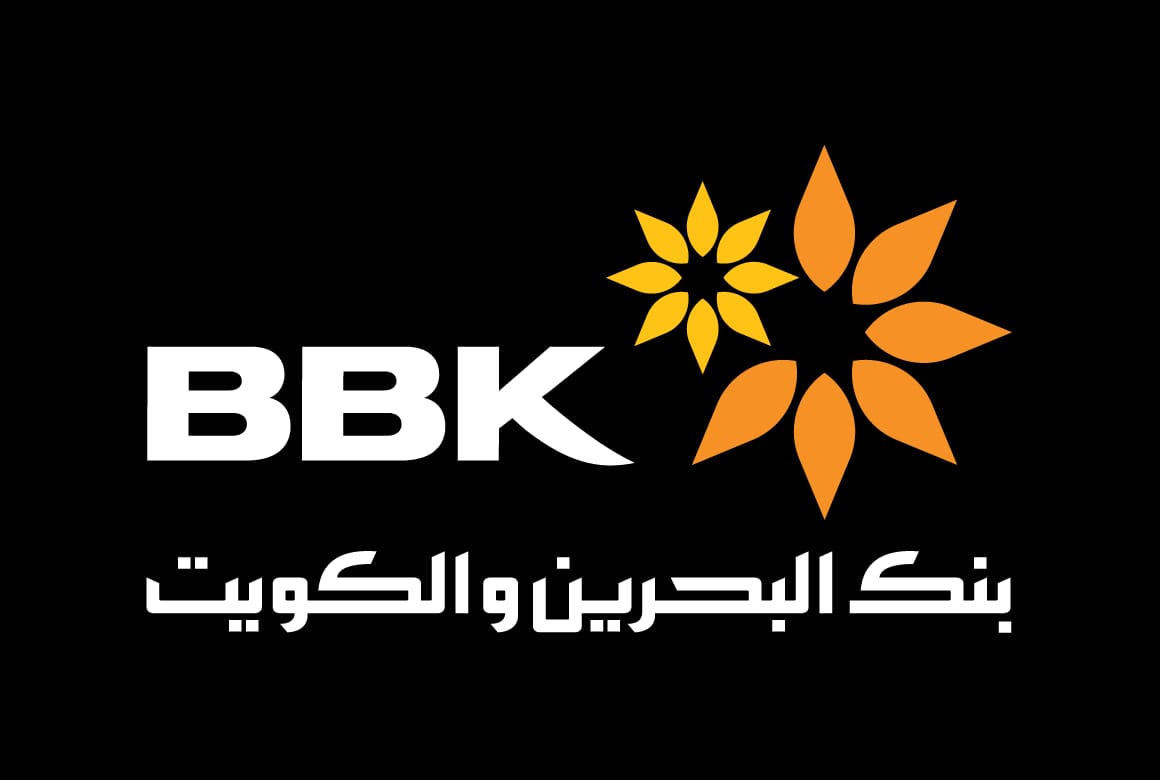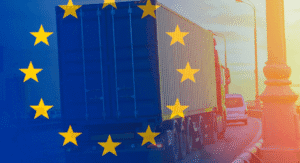Nearly 20 years have passed since the EU and India started negotiations on a bilateral trade and investment agreement. After seven years of intense negotiations, the process stalled in 2014, primarily because of the failure of the respective political leaders to make difficult choices. Talks restarted in 2022 and now offer a reasonable chance of delivering a bilateral free-trade agreement “within the course of the year”, as Indian Prime Minister Narendra Modi and European Commission President Ursula von der Leyen declared in February 2025.
The EU and India both rank among the world’s five largest economies in terms of GDP. Yet much separates the two economically. India’s GDP per capita is much lower than the EU’s, and its level of trade and investment protection is much higher than that of the EU or even its middle-income peers. However, India has recently enjoyed faster growth than any other large economy, including China. The EU and India are also being brought closer by the global geopolitical situation and their common pursuit of strategic autonomy and economic security.
The two sides should learn the lessons from past failure and reach an ambitious agreement in areas that previously proved difficult, such as goods tariffs and services, and in new areas, such as climate protection, that could again derail the revived negotiation if not managed well.
A deal by the end of 2025 will have economic benefits and will also reinforce the broader economic and political links between the EU and India at a time when world affairs are under severe strain. An ambitious agreement could also help reconstruct a rules-based global order for the new multipolar world. This is particularly important for the multilateral trade and climate regimes, where converging EU and Indian positions could have a major influence on the redesign of international institutions and rules.
The authors thank Alicia García Herrero, Heather Grabbe, Sanjay Kathuria, Niclas Poitiers and Nicolas Köhler-Suzuki for their substantive comments on an earlier draft.
1 Introduction
The relationship between the European Union and India has a long history. Bilateral ties were established in 1962 and reinforced with the signature of a Cooperation Agreement of 1994. Since 2004, the EU and India have worked together in a Strategic Partnership that entails political, economic, security and technological cooperation (European Commission, 2004). Part of this partnership was the start, in 2007, of negotiations on a broad-based bilateral trade and investment agreement. However, negotiations were suspended in 2014. The EU-India Strategic Partnership since then has been called “under-performing” and “high on rhetoric and low on substance”.
Since the EU-India Summit of May 2021, the situation has changed substantially. Leaders from both sides agreed to resume negotiations on a comprehensive trade and investment agreement. In 2022, the two partners established a bilateral Trade and Technology Council, a type of forum that, until then, the EU had only with the United States. Then, in February 2025, the European Commissioners – the European Commission’s top officials – took the exceptional step of meeting the Indian Government in New Delhi, underscoring the importance of the EU-India relationship for both parties. The statement issued following this visit said the two sides would conclude their free-trade agreement “within the course of the year” and develop a new strategic agenda for adoption by the next EU-India Summit.
This new attitude needs to be understood in the context of the broader geopolitical situation and the danger it poses to the rules-based multilateral trading system.
On the EU side, the increased focus on India arises from a recognition of India’s potential to become a major economic power, its critical role in achieving net-zero carbon objectives and the EU’s need to derisk its economic relationships with China and a protectionist United States. Similar considerations played an important role in the conclusion in December 2024 of the EU-Mercosur free-trade agreement, more than 20 years after the launch of the negotiations.
Naturally, the agreement with Mercosur, which has a GDP nearly as large as India’s, will be very present in the minds of EU negotiators, although they will have to keep in mind that India’s per capita GDP is well below Mercosur’s. Meanwhile, the EU has already concluded comprehensive trade agreements with Singapore and Vietnam and is negotiating with several Association of Southeast Asian Nations (ASEAN) countries and looking into closer cooperation with Comprehensive and Progressive Agreement for Trans-Pacific Partnership (CPTPP) countries. EU-India trade negotiations should therefore be seen as part of a broader strategy of EU engagement with the Global South in general and the Indo-Pacific region in particular.
India’s new attitude to the EU owes partly to the country’s goal of derisking its economic relationship with China (Basu and García Herrero, 2025). The same considerations influenced the conclusion in May 2025 of the India-United Kingdom free-trade agreement, which will clearly serve as a benchmark for Indian negotiators, though the EU economy is far bigger than the UK’s and the EU is likely to push in a number of areas for greater ambition than achieved in the India-UK deal.
This Policy Brief offers a broad perspective on the EU-India trade relationship (section 2) then discusses and makes recommendations on the bilateral FTA negotiations, which the two sides are committed to conclude by year-end (section 3). Section 4 discusses how the EU and India could build on successful bilateral FTA negotiations to help reinforce the multilateral trading system.
2 The EU-India trade relationship in perspective
In 2023, India’s GDP (measured at current exchange rates) was the fifth largest in the world, regardless of whether one treats the EU as a single entity or not. Its share of global GDP was 3.3 percent at current exchange rates and 7.9 percent at current purchasing power.
From 1992 to 2023, India’s GDP grew at a remarkable average annual rate of 6.2 percent. Within the group of middle-income countries, whose ranks India joined in 2007 according to the World Bank, only China did better (8.9 percent). By contrast, Brazil, the third largest middle-income economy, grew much slower (2.4 percent average rate). Admittedly, India’s impressive performance owed partly to its faster population growth (1.6 percent per year for 1992-2023) compared to China (0.7 percent) and Brazil (1.1 percent), putting its GDP per capita growth achievement (4.6 percent for 1992-2023) well below China’s (8.2 percent), though still impressive compared to other middle-income countries.
Since 2021, India has consistently grown faster than China (in GDP and GDP per capita terms), a situation that is likely to continue, partly because of India’s lower income level. In 2023, India’s GDP per head at purchasing power parity (PPP) reached $10,000, a big improvement compared to the past but still considerably below China ($25,000), Brazil ($21,000) and obviously the EU (nearly $60,000; Table 1).
Table 1: GDP and GDP per capita, EU and India, compared to Brazil and China, 2023
| GDP ($ billions) | GDP per capita ($) | |||
| Nominal ER | PPP ER | Nominal ER | PPP ER | |
| EU | 18,591 | 26,500 | 41,423 | 58,892 |
| India | 3,568 | 14,620 | 2,481 | 10,166 |
| Brazil | 2,174 | 4,457 | 10,295 | 21,107 |
| China | 17,795 | 34,660 | 12,614 | 24,569 |
Source: Bruegel based on IMF data. Note: ER = exchange rate and PPP = purchasing power parity.
India’s rapid growth during the past three decades contrasts sharply with its performance during the previous three decades (1962-1990), when per-capita GDP grew at an average annual rate of barely 1.9 precent, far below China (6.0 percent) or even Brazil (2.9 percent). As universally recognized, the doubling of India’s per-capita income growth in 1992-2013 compared to 1962-1990 owes to the Indian government’s decision, in 1991, to liberalise the economy, both internally and externally, in response to a severe balance-of payments crisis.
India’s inward-looking policy after independence in 1947 resulted in its share of world merchandise exports falling from 2.1 percent in 1951 to a low of 0.4 percent in 1980 (Wolf, 2004). After 1991, this share started to increase, at first modestly, reaching 0.7 percent in 2001. By 2023, India’s share of global merchandise exports had reached 2.3 percent – ahead of Brazil, with a share of 1.8 percent, but far behind China, the world’s largest exporter of goods, with a share of 17.9 percent. India’s export success has been far bigger in services, for which its share of global exports increased from 1.4 percent in 2001 to 5.3 percent in 2023, only slightly behind China (Table 2, columns (1) and (2)).
The differing Indian and Chinese trade performances in goods and services reflect two opposite economic strategies towards the manufacturing sector in the two Asian giants. China adopted an export-led industrial strategy, combining relatively low trade protection and favourable foreign direct investment (FDI), inviting multinational corporations with global value chain (GVC) linkages to the country, resulting in a high share of manufacturing value added in GDP. A key ingredient of this strategy for China was joining the World Trade Organisation (WTO) in 2001, which resulted in less trade protection and better access to foreign markets.
Meanwhile, although it substantially opened up the economy in the early 1990s, India has continued to follow its earlier domestic-led strategy, but in a less trade-distortive manner (thanks to greater foreign competition), resulting in a relatively low share of manufacturing in the economy. The main ingredient of this more gradual strategy, compared to China, was the fact that India was already a member of the General Agreement on Tariffs and Trade (GATT) in 1991, when it decided to liberalise. Therefore, its liberalisation was not a quid pro quo to obtain better access to foreign markets, especially advanced economies, which were already relatively open to Indian imports. India’s liberalisation in 1991 was therefore far more gradual than China’s liberalisation in 2001. Whereas the latter reduced both its most-favoured nation (MFN) bound and applied tariff rates drastically, the former only lowered its applied rates, keeping its bound rates at very high levels. The result for India was domestic-led growth (like in Brazil) rather than export-led growth (like in China and other East Asian countries). This is also illustrated by the relatively low share of manufacturing in exports and imports in India compared to China (Table 2, columns (3)-(5)).
Table 2: Selected trade indicators, EU and India, compared to Brazil and China, 2023
| (1) | (2) | (3) | (4) | (5) | (6) | |||||
| Shares of the global goods trade, % | Shares of global services trade, % | Manuf. VA, % of GDP | Share of manuf. in goods trade, % | MFN tariffs, simple average for all products, % | RTAs,All/XXIV,numbers | |||||
| X | M | X | M | X | M | Bound | Applied | |||
| EU | 14.2 | 13.8 | 23.4 | 22.2 | 15.3 | 81.3 | 67.5 | 5.1 | 3.0 | 47/47 |
| India | 2.3 | 3.4 | 5.3 | 4.1 | 12.9 | 67.9 | 47.7 | 50.8 | 17.0 | 19/4 |
| Brazil | 1.8 | 1.3 | 0.7 | 1.4 | 13.3 | 25.0 | 75.9 | 31.4 | 11.2 | 9/1 |
| China | 17.9 | 13.1 | 6.0 | 9.3 | 26.2 | 93.5 | 58.1 | 10.0 | 7.5 | 20/18 |
Source: Bruegel based on World Bank and WTO data. Note: M = imports, RTAs are regional trade agreements, VA = value added, X = exports, and XXIV = GATT Article XXIV RTAs.
India’s still has very high MFN bound rates (50.8 percent on average across all products) reflect the fact that the country never engaged in substantial reciprocal trade liberalisation within the multilateral framework of the GATT/WTO, insisting instead on its development status and ‘special and differential treatment’ to benefit from trade liberalisation by more advanced countries, without having to offer equivalent liberalisation. Most of India’s substantial tariff liberalisation since 1991 has been undertaken unilaterally, with MFN applied rates gradually reducing to an average of 13 percent by 2008. The corollary of the unilateral nature of these tariff cuts is that they are ‘unbound’, implying that the country reserves the right to apply the higher bound rates when it wishes and without having to consult or compensate other WTO members.
India’s government used this possibility in 2018, when it increased the average applied tariff (which had remained below 14 percent for the previous 10 years) to 17.1 percent. Tariff protection then continued to increase, reaching more than 18 percent in 2021 and 2022, before returning to 17 percent in 2023. This partial reversal in trade policy, which was accompanied by an increase in various non-tariff barriers (NTBs), has been criticised by Indian trade economists, such as Arvind Panagariya, who complained that India is “deviating from the road of steady liberalization that we had adopted in 1991… and ha[s] now taken a U-turn to begin traveling in the reverse direction”, adding that “import protection as the path to global competitiveness is a non-starter”.
In the mid-2000s, India entered a new trade liberalisation phase, this time in response to increased competition from China, resulting from its entry into the WTO. For the past 25 years, India has sought to achieve reciprocal trade liberalisation by negotiating regional trade agreements (RTAs), including free-trade agreements (FTAs), with a number of important trading partners. The WTO website (consulted on 1 June 2025) lists 19 RTAs currently in force between India and individual countries or groupings, of which only four involve FTAs notified to the WTO under GATT Article XXIV, which allows the signing of FTAs provided that they meet certain conditions meant to ensure that third countries will not be negatively impacted. The other 15 FTAs were notified under the so-called ‘enabling clause’, which allows developing countries to craft FTAs with less-stringent conditions than those imposed by GATT Article XXIV. The greater flexibility afforded by the enabling clause, which can only be used if all the parties to an FTA are developing countries, essentially means that these agreements provide for less trade liberalisation than those notified under GATT Article XXIV (Table 2, column (6)).
India’s first GATT Article XXIV FTA was signed with Singapore in 2005. During the next two years, India launched similar FTA negotiations with Korea and Japan. Agreements were signed with Korea in 2009 and Japan in 2011, consisting, like that with Singapore, of separate FTAs for goods and services. All of these FTAs were, however, quite shallow in terms of commitments, focusing mainly on tariffs.
In 2007, India agreed to launch more comprehensive negotiations with the EU. As we detail in the next section, these negotiations were suspended in 2014 and eventually restarted in 2022. After Brexit, the UK started its own negotiations with India, reaching a successful conclusion on 6 May 2025. India has also signed FTAs (covering goods and services trade) with Australia (2022) and the European Free Trade Association (EFTA; 2024). India is not participating in the two mega regional trade agreements now operating in the Asia-Pacific region (the Regional Comprehensive Economic Partnership (RCEP) and the CPTPP) and is therefore much less-integrated into regional value chains than some of its competitors.
In 2024, the EU was India’s largest trading partner, slightly ahead of the US and China. However, since (like China and the US) the EU does not have preferential access to the Indian market, which is protected by relatively high applied MFN tariffs, it has likely been hurt by trade diversion caused by the new Indian FTAs, especially those with Korea and Japan, whose producers compete with EU producers. For the EU (and others without an FTA with India), such trade diversion has already translated into a loss of market share in favour of countries that have FTAs with India, such as in the case of automotive components with Korea and Japan.
For India, trade diversion is likely to generate higher costs for the economy, compared to a situation without discrimination between suppliers based on whether they enjoy preferential access to the Indian market or not. India may wish therefore to combine conclusion of reciprocal FTAs with a reduction in MFN tariffs in non-sensitive sectors. There would also be a good argument for reducing policy uncertainty by bringing bound tariffs closer to applied MFN rates, but this would require multilateral negotiation. The upshot is that both the EU (and also other partners without an FTA with India) and India have an economic interest in concluding a bilateral FTA. This is precisely what the EU and India are now hoping to achieve in 2025.
From India’s perspective, therefore, an FTA with the EU would not be the first with an advanced economy with much lower trade protection than India, since it already has FTAs with several advanced economies. But it would be an FTA with a far bigger economy than previously, and also with India’s largest trade partner. Likewise, from the EU’s perspective, an FTA with India would not be the first with a middle-income economy with much higher trade protection than the EU, but it would be a deal with the second biggest middle-economy and one of its top ten trade partners.
3 The EU-India FTA negotiations
3.1 Twenty years of on-off talks
From the EU’s perspective, the start of negotiations with India in 2007 was part of a first generation of comprehensive FTAs that also included Korea and ASEAN. The EU’s goal was to open up the markets of highly protected emerging economies and tackle not only tariffs, but also services, procurement, regulatory issues and the interface between trade and sustainable development. Negotiations with Korea were concluded rapidly, but talks with ASEAN soon stalled, and the EU decided to launch separate negotiations with Singapore and Vietnam, which were concluded respectively in 2018 and 2019.
From India’s perspective, the EU was a good candidate to negotiate its first comprehensive FTA because of the expectation that the EU would be less demanding than the US on agriculture. Negotiations were preceded by a scoping exercise in which the EU and India agreed the key parameters for a comprehensive negotiation. This scoping also made clear that the EU was ready to respect India’s sensitivities in relation to the elimination of many agriculture tariffs.
To what extent did negotiations fail in 2014 because of the EU insistence on a rigid comprehensive FTA template? The situation is complex. The EU was very conscious that the agreement with India could not follow the model of the agreement with Korea. It accepted from the beginning that tariff commitments would be asymmetrical and that on certain sensitive issues, such as patent protection, India could not be expected to change its domestic legislation. The EU also signalled its readiness to sequence procurement negotiations, for which India was in the process of developing domestic legislation. Although the EU would have always insisted on the importance of a trade and sustainable development chapter, it was conscious of India’s political sensitivities and ready to explore a less-ambitious chapter than that included in the agreement with Korea. At the same time, the EU was concerned that concluding negotiations at too low a level of ambition could create a poor precedent for negotiations with Vietnam, a country at a similar level of development to India, and for which the EU’s objective was to establish a template that could be followed in bilateral negotiations with other ASEAN countries.
By October 2013, the EU and India had exchanged offers on tariffs and services, and efforts were focused on identifying the outlines of possible agreement for the market-access component of the FTA. By far the most politically sensitive topic was tariffs on car and car parts. The EU had just gone through a difficult process of ratification of the FTA with Korea in the face of opposition from the EU car industry, which feared increased competition from Korean producers in the EU market. EU car producers wanted improved access to the Indian market, but this met strong opposition from the Indian industry, including Japanese and Korean firms that had recently invested in India – the FTAs concluded by their governments excluded the car sector. Despite the entrenched positions of both sides, their respective tariff zones of possible agreement were eventually tantalisingly close, which raises the question of why it was not possible to bridge the difference at the end.
Here the issues of timing and political engagement came to the fore. By the time landing-zone negotiations started, the Indian elections were looming and prime minister Manmohan Singh was in a weak political position. With the benefit of hindsight, it is clear that both sides should have started negotiations on an outline agreement earlier, and should have more regularly brought the state of FTA negotiations to the attention of their leaders. Clearly, negotiations between strategic partners require regular leadership involvement on both sides.
After the election of Prime Minister Narendra Modi in May 2014, the EU sought to establish whether negotiations could resume on the basis of the proposal shared in October 2013. But it soon became clear that the momentum had been lost, and India was now much more focused on increasing protection for the manufacturing sector. At the EU-India summit on 8 May 2021, leaders agreed to relaunch the FTA. Significant progress has been achieved during the past four years, but much remains to be done if the declared objective of reaching a conclusion before the end of the year, set in February 2025 at the New Delhi meeting, is to be met.
3.2 The US and Chinese shadows
The hoped-for EU-India FTA must be understood in the context of India-China and India-US relations.
Security tensions and an unbalanced trade relationship between India and China make it unlikely that the two Asian giants will strengthen their trade and economic relationship in the near future (Basu and García Herrero, 2025). While India would have an interest in attracting more Chinese investment because of its job creation potential, it will need to balance this against economic security concerns and the limited prospects of narrowing a massive bilateral trade deficit. India might wish to foster greater integration in Asian value chains, potentially by joining RCEP and CPTPP. But such a step would be difficult because of the deficit with China, US pressure to derisk from China and the fact that joining the CPTPP requires acceptance of high standards in a number of regulatory areas, plus market-access negotiations with countries that may seek further opening of agriculture markets.
Meanwhile, India and the US announced on 13 February 2025 the start of negotiations on “the first tranche of a mutually beneficial, multi-sector Bilateral Trade Agreement (BTA) by the fall of 2025”. For India, the immediate objective of these negotiations is to seek relief from the application of US ‘reciprocal’ and sectoral tariffs. It is not clear, however, how much the US is ready to offer in terms of relief from the across-the-board 10 percent import surcharge introduced by President Trump, or from sectoral tariffs on steel and aluminium, cars and potentially pharmaceuticals.
More fundamentally the US has no legal authority to offer India the elimination of MFN duties. India may therefore find it difficult to justify before public opinion an agreement that would reduce India’s tariff protections without equivalent concessions from the US. Moreover, if India offers such concessions on a preferential basis, it will further undermine respect for non-discrimination, a central tenet of the WTO system. A better approach would be for India to reduce some of its very high tariffs on an MFN basis, even if the reduced tariffs remain unbound pending a broader multilateral negotiation.
3.3 Priorities
To meet an end-2025 deadline for agreement on an EU-India FTA, particular attention should be given to the following issues :
Tariffs
At 17 percent, India’s average tariff is much higher than other Indo-Pacific countries that are competing to attract foreign investment – for example, Thailand (11.5 percent), Vietnam (9.6 percent) and Malaysia (5.6 percent) (Pradhan, 2025). The EU already has a comprehensive FTA with Vietnam and is negotiating comprehensive agreements with Thailand and Malaysia. To attract export-oriented investments, Indian tariffs should be comparable to those of other emerging markets in the region. Eliminating tariffs on intermediate products and capital goods will be critical for development of an export-oriented Indian industry.
At the same time, the EU should respond to India’s request for asymmetric liberalisation and eliminate rapidly most of its industrial tariffs, so that the benefits of the FTA are visible for export-oriented Indian industries. Tariffs on passenger cars and car parts are likely to be again the most sensitive item. In light of the sensitivities of both sides, tariff commitments are not likely to be very ambitious in the agriculture sector.
Negotiations are apparently difficult on rules of origin. Here a possible approach would be to agree on rules of origin similar to those included in EU agreements with ASEAN countries, but to provide for cumulation with countries that have concluded FTAs with both the EU and India. This could also prepare the ground for a common protocol on rules of origin between the EU, CPTPP, EFTA and other Indo-Pacific countries (García Bercero, 2025).
Standards and conformity assessment
India has developed a system of mandatory standards that require certification in the form of quality control orders (QCOs) following audits of manufacturing facilities. Most products subject to QCOs are not subject to mandatory third-party certification in Europe. Since QCOs are a major obstacle for marketing products in India, creative legal solutions should be explored. The issue is also a priority in negotiations between India and the US (Linscott, 2025).
More broadly, both sides have an interest in including in the trade agreement chapters on technical barriers to trade and sanitary and phytosanitary standards that will establish the basis for closer regulatory cooperation. European companies have indicated that the overall cost of doing business in India is a greater obstacle than tariffs, so the success of the EU-India trade and investment agreement will hinge on the reduction of regulatory obstacles. Similar demands are made by US business (Köhler-Suzuki, 2023).
Services and digital trade
India has very few service commitments in its WTO General Agreement on Trade in Services (GATS) schedule. The EU-India FTA should therefore at least maintain the current level of openness. The EU would also need to consider asymmetry of commitments and explore creative solutions on the temporary provision of services by professionals, perhaps by also encouraging visa-related commitments at member-state level outside the FTA.
There appears to a very significant scope for expanding cross-border digital trade, although it would be difficult to negotiate a digital chapter with a level of ambition similar to EU agreements with Japan, Singapore and Korea. In particular India is unlikely to accept commitments on localisation requirements or on the non-application of duties on e-commerce. In case it is not possible to conclude an ambitious digital chapter, the EU may wish to privilege negotiations with the CPTPP countries and conclude an open plurilateral agreement with them that India may consider joining at a later stage. In any event the EU and India could cooperate more on digital regulation, in particular on artificial intelligence, within the framework of their Trade and Technology Council.
Investment
The EU and India are negotiating a separate investment agreement, although the goal is not to conclude it this year together with the FTA. India has terminated its bilateral investment treaties with EU member states and is in the process of developing a new template for investment agreements. This has negatively impacted on FDI flows (Köhler-Suzuki, 2023). No EU-level investment-protection agreement has yet entered into force with any third country because of the need for member-state ratification of any agreement that includes a procedure for investor-state adjudication. It may therefore be the right time for an innovative approach to investment negotiations.
The objective should be to create the conditions to facilitate more European investment and greater integration of Indian and EU value chains. This could be achieved through a combination of market-access commitments (both tariffs and investments) in the FTA, and investment facilitation and investment protection standards in the separate investment agreement. To avoid the difficulty of national ratification and EU unanimity rules, the investment protection agreement should only provide for state-to-state dispute settlement, since investor-state dispute settlement remains a national prerogative in the EU. The EU and India could also agree a joint declaration stating India’s readiness to negotiate bilateral investment treaties with interested EU countries. Such bilateral agreements would have to respect the protection standards in the EU-only agreement.
The EU-India investment agreement could also be an opportunity to implement the new EU concept of Clean Trade and Investment Partnerships (CTIPs) – frameworks for clean industrial collaboration with third countries on clean energy, critical raw materials, clean-tech trade and investment. Green industries, including energy-intensive industries, are particularly promising areas for European investment in India. The investment agreement could establish a structure for consultation with industry to identify investment opportunities and, where necessary, support this through financial derisking instruments. It would be important that any such investments benefit from the green industrial policies applied by India and the EU, in order to create lead markets.
Procurement
India’s federal procurement laws apply ‘made in India’ preferences. In the absence of commitments by India to non-discriminatory treatment of EU suppliers, the EU may prefer to keep open the option of also discriminating against Indian suppliers. A possibility would be for both sides to agree initially to non-discriminatory access to their respective public contracts for a limited number of sectors, subject to review after some years. These sectors could include those for which the EU, through the Clean Industrial Deal, intends to introduce ‘buy European’ requirements consistent with international commitments. In the absence of FTA commitments, Indian companies may not be able to benefit from access to EU procurement in sectors supported by the CTIP under the investment agreement. As an incentive for India to offer meaningful national treatment commitments, the EU could also be ready to offer asymmetric procurement commitments.
Sustainable development
The inclusion of a trade and sustainable development (TSD) chapter has been a feature of all EU FTAs since the agreement with Korea. India appears now ready to include such a chapter in its FTAs, having done so in its agreements with EFTA and the UK. It is clear though that the possibility of sanctions for breaching TSD commitments, and therefore a binding dispute settlement mechanism, would cross a red line for India. Another sensitive area is the inclusion of a formalised procedure to consult civil society on issues covered by the sustainable development chapter. The EU could explore whether a TSD chapter similar to that included in the EU-Mercosur agreement could also be applied with India. It might be necessary, however, to give India more leeway. For instance, the EU could establish its own mechanism to consult civil society in relation to all the activities relating to the implementation of the FTA and to ensure full transparency of its proceedings.
India has raised a number of concerns about EU climate-related measures, most notably the carbon border adjustment mechanism (CBAM) and the EU Regulation on Deforestation-free Products (Regulation (EU) 2023/1115). India has asked to be exempted from CBAM, which the EU cannot do without compromising its environmental objectives and the need to comply with WTO non-discrimination rules. The EU could however offer reinforced cooperation on the implementation of CBAM, either as part of the trade agreement or separately. It could also start discussions with countries that have already or are developing domestic carbon markets (as is the case for India), to develop a framework for cooperation on decarbonisation commitments.
The annex to the TSD chapter in the EU-Mercosur agreement includes a section on “sustainability measures affecting trade”, which commits its signatories to cooperate on the implementation of trade-related sustainability measures. In particular, the annex includes specific commitments relating to the implementation of the EU Regulation on Deforestation-free Products. In relation to India, specific commitments could be included relating to CBAM implementation, including measures to reduce the administrative burden on SMEs, technical assistance to support India in the development of its carbon pricing scheme, facilitation of accreditation and early consultation about future regulatory developments. Together with the support for investment in energy-intensive industries, such as green steel intermediate products, this could go a long way towards alleviating Indian concerns. In the medium term, a climate coalition, could provide an alternative to the application of CBAM.
In summary, the benefits of EU-India trade and investment agreements hinge on being able to provide the necessary incentives for the expansion of trade and investments for both parties. While this does not require an agreement as comprehensive as recent EU FTAs, the agreements should include a critical mass of issues that make India an attractive destination for European investment compared to other countries in the region. The EU market-access offer should be sufficiently attractive and be accompanied with a genuine commitment to reinforce regulatory dialogue, in particular on green and digital regulation. The FTA could be concluded as planned by end-2025, and then more time given to develop an innovative investment agreement that includes specific green value chain investment projects.
In our view, the EU is better placed than China or even the US to offer India a transformative and balanced trade agreement. If combined with a new type of investment agreement, an FTA could increase export-oriented investment in India and boost its manufacturing sector. The EU-India trade agreement should also be viewed as an important contribution to a more strategic geopolitical partnership between the two parties. This should allow for more honest engagement on major foreign policy challenges. In particular, India and the EU have the potential to be leading players in restructuring the multipolar global order in relation to the global trading system (see section 4) and the climate regime. The EU and India could also work with other countries that have introduced domestic carbon prices, to agree on the decarbonisation of trade-intensive sectors, which could eventually provide an alternative to CBAM (Clausing et al, 2025).
4 The EU, India and the multilateral trading system
The WTO is experiencing an existential crisis. Since the failure of the Doha Round negotiations in 2008, the WTO has ceased being a credible forum to negotiate market access or the updating of trade rules. In his first term, President Trump put an end to binding dispute settlement. So far in his second term, Trump has ignored the two most basic principles of the GATT/WTO system: MFN and stability of tariff bindings. Beyond their bilateral engagement, the EU and India should reflect on how to position themselves in view of the risk of the demise of the rule-based trading system and its replacement by power-based trade relations. While the EU and India are better placed to defend their interests than smaller players, their interests would be impacted negatively by the continuous erosion of the WTO and the emergence of a bipolar US-China trading regime based on managed trade and spheres of influence.
India’s path to global competitiveness and development requires the critical factors behind China’s successful development strategy: stable conditions and protection against arbitrary trade measures. Likewise, the EU will find it difficult to defend its central position in the global trading system in a world without rules.
The prospect of EU-India cooperation at the WTO, although sorely needed, is hindered by a legacy of misunderstandings and established ‘doctrines’ that no longer correspond to the current environment of geoeconomic competition. A history of EU-India trade relations in the context of the WTO remains to be written, but three elements are worth highlighting:
The EU and India maintained a close level of strategic engagement during the Uruguay Round negotiations that led to the establishment of the WTO in 1995. While India was a strong defender of developing-country interests, it also had a strategic interest in reinforcing disciplines on US unilateralism and was ready to consider how improved WTO rules could support the opening up of the Indian economy to more international competition.
A strategic gap between the EU and India emerged when defining the WTO agenda after its creation. While the EU became the main advocate of WTO expansion into new areas of rulemaking – investment, competition and trade and the environment – India insisted on the need to correct the ‘development deficit’ in WTO agreements and led the opposition to the inclusion of new issues into what eventually became the Doha Development Agenda (DDA). With the benefit of hindsight, it is clear that the EU should have given much more thought to how to reconcile new rule-making activities with the challenges for developing countries in implementing Uruguay Round commitments. On the other hand, India’s strident opposition to bringing new issues to the WTO agenda has contributed to the partial demise of the WTO and risks condemning it to complete irrelevance.
Despite this strategic gap, the EU has maintained a fairly productive level of engagement with India. This was the case both during the DDA negotiations on agriculture and during the efforts to get India to lift its opposition to plurilateral agreements, such as the WTO agreement relating to services domestic regulation23. The question is whether this relatively high level of trust can be used to revisit long established positions and respond to the major strategic questions affecting the global trading system.
In view of India’s reputation as a sceptic in WTO negotiations, it may seem paradoxical to suggest that the EU and India should engage in a more strategic dialogue on how to reposition the WTO in the new geoeconomic environment24. It is clear however that no major reform of the WTO is possible without the active participation of India and that the current crisis may also create conditions for new thinking that goes beyond both India’s and the EU’s longstanding positions. The focus should not be primarily on the issues currently on the WTO agenda, but rather on exploring the types of multilateral rules and institutional arrangements that would best serve the long-term interests of India and the EU.
The priority strategic question is how multilateral trade institutions should be adapted to a multipolar world. Is it still possible to imagine a rule-based institution such as the WTO, in which both the US and China participate? What changes to the WTO rules and institutional structure would be needed to engage the US, China and the broader WTO membership? In the absence of engagement by the US and or China, what options are available for India and the EU? How can the stability that is critical for growth and development be maintained, and how can further fragmentation of global trade and marginalisation of vulnerable developing countries be avoided? What is the proper interface between the trade regime and the international monetary, development and climate regimes?
To encourage more systemic analysis of these questions, the EU and India could establish a reflection group of independent experts to present recommendations for discussion at the next EU-India Trade and Technology Council and Summit, currently scheduled to take place in India in 2026.
5 Conclusion
Nearly 20 years have elapsed since EU-India trade negotiations were first launched. While not quite as long as the EU-Mercosur negotiations, which started in 2000 and concluded in 2024, the EU-India talks are reaching a point where there is sufficient political involvement at leaders’ level to strike a deal. Failure would be a huge economic and political setback for both sides, especially given the current state of the world.
Geopolitics is the reason why the EU-India relationship has become much more important for the two sides, and others, than it was 20 years ago, when it was upgraded to the level of Strategic Partnership but without much actual substance. The change obviously has much to do with the growing rivalry between China and the United States, encompassing economic, technological and geopolitical spheres, and their efforts to coerce each other and other countries. In this new world, the EU and India share strategic autonomy and economic security goals with a “shared interest in shaping a resilient multipolar global order that underpins peace and stability, economic growth and sustainable development”25.
An EU-India trade deal by the end of 2025 will have not only economic benefits but will also reinforce the broader economic and political links between the EU and India at a time when world affairs are under severe strain. An ambitious bilateral trade and investment agreement should serve to reinforce cooperation between the EU and India in the global context to help reconstruct a rules-based global order for the new multipolar world. This is particularly important for the multilateral trade and climate regimes, where converging EU and Indian positions could have a major influence on the redesign of international institutions and rules.
Source : Bruegel

